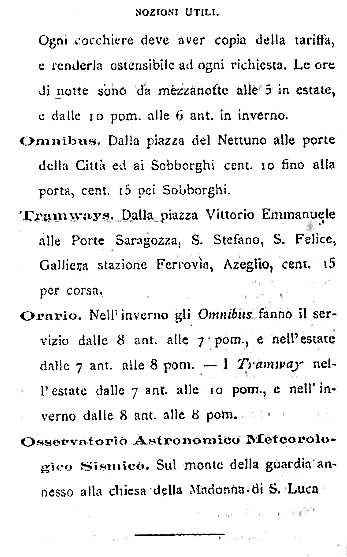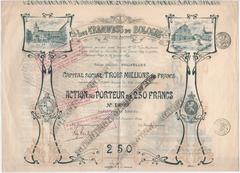
Bologna Tramway Network: Visiting Hours, Tickets, and Travel Guide
Date: 14/06/2025
Introduction
Bologna, a city celebrated for its medieval architecture and vibrant culture, is experiencing an urban renaissance with the return of its historic tramway. First introduced in 1880, the tramways profoundly shaped Bologna’s growth and social life until their closure in 1963. Now, as the city moves toward a sustainable future, the new tramway network is set to become a cornerstone of both daily life and visitor experience, connecting major attractions while reducing congestion and pollution.
This comprehensive guide provides everything you need to know about the Bologna tramway network—its storied past, plans for modern expansion, essential visitor information, and practical tips for exploring the city’s rich heritage. Whether you’re a tourist, history enthusiast, or local commuter, you’ll find detailed guidance on tickets, visiting hours, accessibility, and key stops near Bologna’s iconic sights. For official updates, visit Bologna Tramway Project, TPER public transport, and Tram Bologna.
Table of Contents
- Historical Context: Bologna’s Tramways
- The Modern Bologna Tramway Project
- Technological Innovations and Accessibility
- Visitor Information: Hours, Tickets, and Travel Tips
- Navigating Bologna During Tramway Construction
- Frequently Asked Questions (FAQ)
- Visual Aids and Useful Resources
- Summary and Recommendations
- Sources
Historical Context: Bologna’s Tramways
Early Beginnings and Expansion (1880–1963)
Bologna’s tramway system dates back to the late 19th century. In 1877, city officials approved a network of horse-drawn tram lines, with the first route opening in 1880 between Bologna Centrale and Piazza Maggiore (Wikipedia: Trams in Bologna). By 1904, the network was electrified, greatly expanding its reach and efficiency.
The 1930s and 1940s marked the system’s peak, with trams connecting urban and suburban districts, supporting economic growth and daily life—even enduring through both World Wars.
Decline and Closure
After WWII, increasing preference for buses and private vehicles led to a gradual dismantling of the tram system. By November 1963, the last tram departed, closing an 80-year chapter (Systra: Bologna Tram Network). However, the tramways left a lasting imprint on Bologna’s urban fabric and collective memory.
Revival and Modern Significance
In response to renewed concerns over congestion and pollution, Bologna adopted an Urban Sustainable Mobility Plan (PUMS) in 2018, setting the stage for a new, modern tramway network (Wikipedia: Bologna Tramway). With construction underway since 2023, the revival aligns Bologna with other European cities investing in light rail for greener, more efficient transit (Railway Technology: Tram Bologna).
The Modern Bologna Tramway Project
Network Overview
The new tram system will consist of four color-coded lines—Red, Green, Yellow, and Blue—spanning approximately 57 kilometers:
- Red Line (Linea Rossa): The flagship route, stretching 16.5 km from Borgo Panigale to the University of Agriculture, with a branch to Michelino-Fiera. Key stops include Ducati, Ospedale Maggiore, MAST, and Bologna Centrale (European Commission).
- Green Line: Will connect the Red Line to Corticella and Castel Maggiore, then extend east to Due Madonne.
- Yellow Line: Will link Casteldebole (west) to Rastignano (southeast).
- Blue Line: Will run from Casalecchio Garibaldi (southwest) to San Lazzaro di Savena (east).
When fully operational (expected by 2026–2027), the network will serve approximately 300,000 passengers daily, accounting for over a fifth of Bologna’s public transport journeys (Railway Gazette).
Project Financing and Sustainability
Financed largely through Italy’s Recovery and Resilience Plan, the tramway project represents a €3.4 billion investment in green mobility. The Red Line alone is supported by €15.1 million, aiming to shift significant daily trips from car to tram (European Commission). The environmental benefits include a projected 40% reduction in greenhouse gas emissions and a major decrease in urban congestion.
Technological Innovations and Accessibility
CAF Urbos Trams
Bologna’s new fleet will be supplied by CAF, utilizing the Urbos platform (Railway Pro). Key features:
- Modular five-section vehicles, 35 meters long, with capacity for over 200 passengers.
- On Board Energy Storage Systems (OESS): Advanced batteries enable catenary-free operation in heritage areas, preserving the city’s UNESCO-listed porticoes and skyline.
- Energy efficiency and reduced emissions, supporting Bologna’s sustainability agenda.
Infrastructure and Universal Accessibility
Tram routes will primarily use segregated tracks for reliability and speed. The Red Line will offer 4–5 minute frequencies at peak times, with major park-and-ride sites at Borgo Panigale and Michelino (European Commission).
All trams and stations are designed for accessibility:
- Low-floor boarding for wheelchair users and strollers.
- Audio-visual announcements and clear signage in multiple languages.
- Priority seating and bicycle spaces.
Visitor Information: Hours, Tickets, and Travel Tips
Operating Hours
Once open, the tramway is expected to operate daily from 5:30 AM to midnight. Service frequencies will be highest during rush hours. For up-to-date schedules, consult the TPER website.
Ticketing Options and Prices
- Single Ticket (€1.50): Valid for 75 minutes across trams, buses, and suburban trains.
- On-Board Ticket (€2.00): Purchased directly from the driver.
- Mi Muovo City più Ticket (€1.80): Covers urban buses and trains.
- Day Pass (€6.00): Unlimited travel for 24 hours; ideal for active tourists.
Tickets are available at newsstands, tobacco shops, vending machines, and via the TPER app. Validate your ticket before boarding to avoid fines.
Accessibility for Visitors
- Universal access: All trams and stops are barrier-free.
- Real-time information: Displays and announcements are available in Italian and English.
- Easy transfers: Integrated ticketing across buses, trams, and trains.
Key Tram Stops and Nearby Attractions
- Bologna Centrale: Main railway hub.
- Ducati: For museum and factory tours.
- MAST Foundation: Contemporary art and innovation.
- Michelino-Fiera: Exhibition center and park-and-ride.
- Piazza Maggiore: The historic city heart.
- University District: One of Europe’s oldest academic centers.
Tips for Tourists
- Validate tickets before boarding.
- Plan routes using the TPER journey planner or Google Maps.
- Travel off-peak for more comfort.
- Explore on foot or by bike: Many central sites are easily walkable from tram stops.
- Be mindful of ZTL zones: Tramway access avoids city center driving restrictions.
Navigating Bologna During Tramway Construction
Construction Impact
As of June 2025, construction is active along major arteries such as Via Indipendenza and Via Stalingrado (Tram Bologna). Temporary route changes, parking adjustments, and detours are well-marked. Visitor infopoints provide current information.
Alternative Transport Options
- Buses and trolleybuses: Comprehensive coverage across the city.
- City Red Bus: Hop-on, hop-off sightseeing with multilingual guides.
- Bike sharing: Ride Movi and similar services.
- Marconi Express: Monorail shuttle between airport and city center.
Travel Tips
- Check official updates before your trip (Tram Bologna News).
- Allow extra travel time near construction sites.
- Use pedestrian routes and infopoints for guidance.
- Emergency contact: +39 366 6536063 (Tram Bologna).
Frequently Asked Questions (FAQ)
When will the Bologna tramway open?
The Red Line is scheduled for 2026, with network completion expected by 2027–2030.
How do I buy tram tickets?
Tickets are available at vending machines, shops, via the TPER app, and on board.
Are the trams accessible?
Yes, trams and stops are fully accessible for wheelchairs, strollers, and those with reduced mobility.
Can I use my bus ticket on the tram?
Yes, the ticketing system is fully integrated.
What are the best alternatives during construction?
Bologna’s bus network, pedestrian-friendly streets, and bike sharing services remain excellent alternatives.
Visual Aids and Useful Resources
- Interactive tram route map: Tram Bologna project
- Images:
For downloadable maps and further visual resources, visit the official tramway and city tourism websites.
Summary and Recommendations
Bologna’s tramway revival is a testament to the city’s commitment to melding its rich heritage with a sustainable, accessible future. The new network will provide fast, eco-friendly access to UNESCO-listed sites, museums, and bustling neighborhoods, all while reducing congestion and pollution. While construction continues, clear visitor information, integrated ticketing, and accessible transport options make exploring Bologna straightforward and enjoyable.
For real-time updates, journey planning, and ticketing, consult the TPER website, the Bologna Tramway Project page, and mobile apps like Audiala. The tramway network is more than a transport upgrade—it’s your gateway to experiencing Bologna’s unique blend of history and innovation (The Travel Folk, Railway Gazette).
Sources
- Wikipedia: Trams in Bologna
- Systra: Bologna Tram Network
- Railway Technology: Tram Bologna Project
- European Commission: Tram Linea Rossa
- Railway Pro: CAF Tram Contracts in Italy
- The Travel Folk: Best Things to Do in Bologna
- Railway Gazette: Bologna Starts Construction of Modern Tram Line
- Tram Bologna Official Website
- Bologna Welcome: Must Attend Events for 2025
- Italian for a While: Public Transport Guide in Italy
































